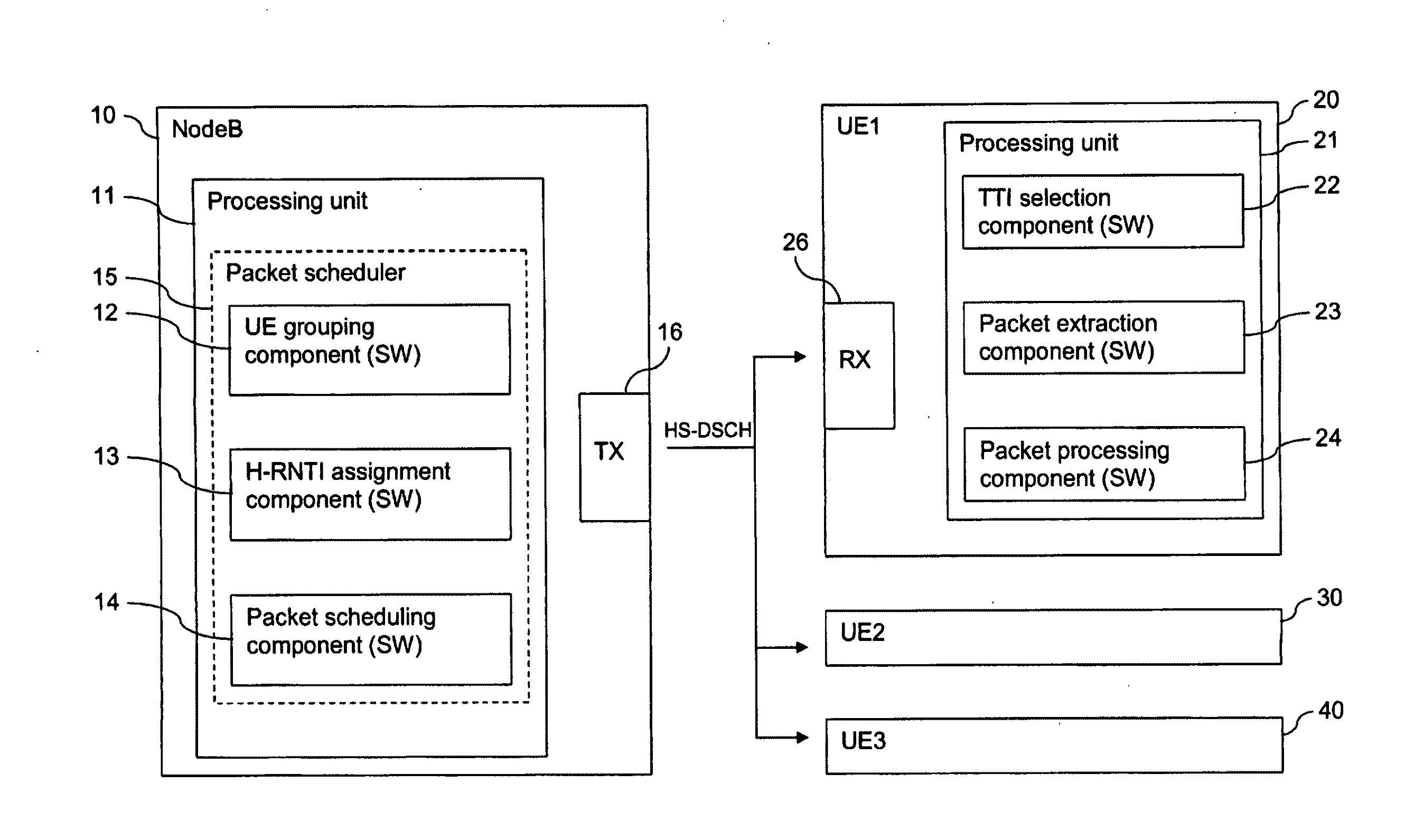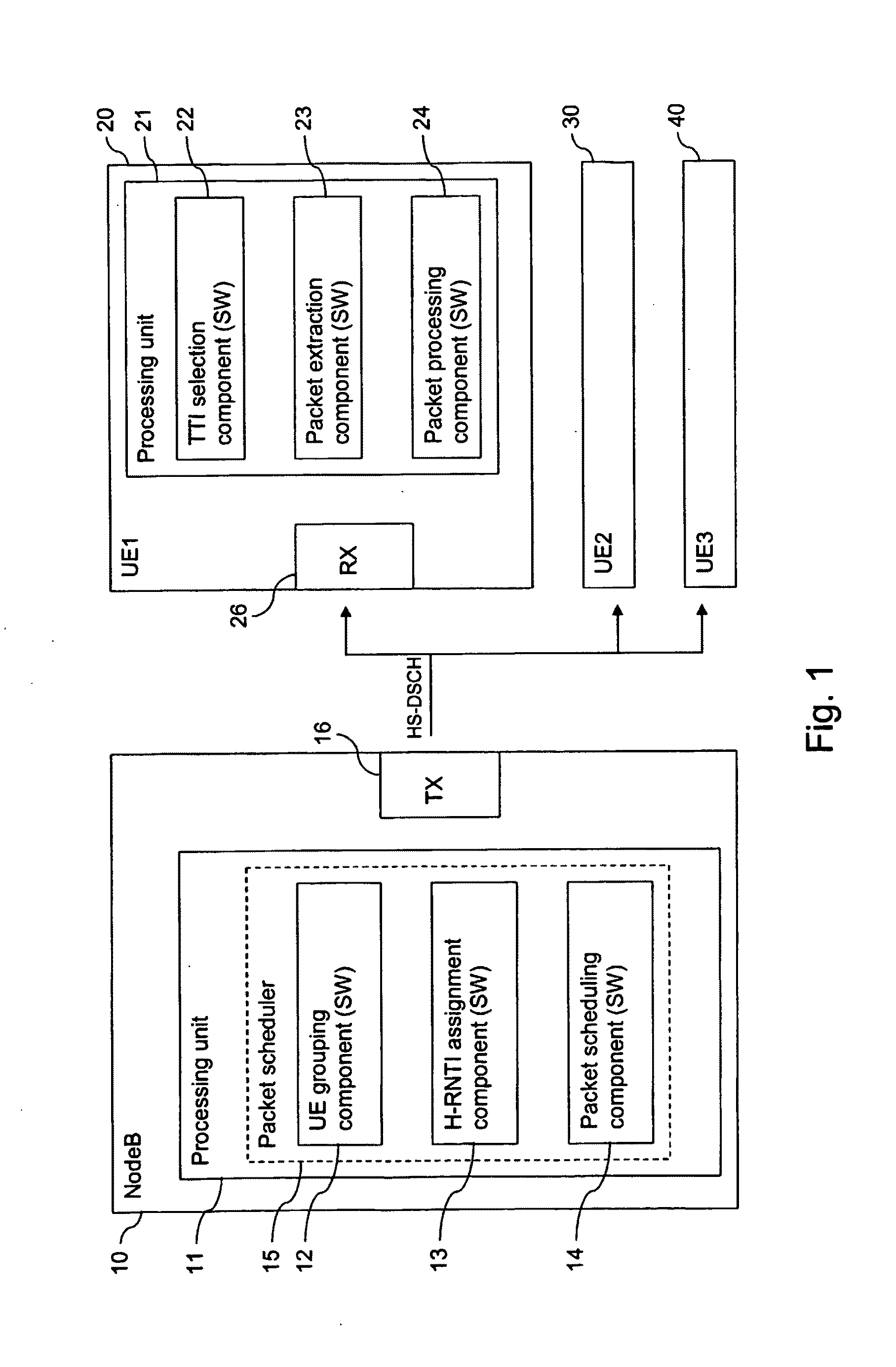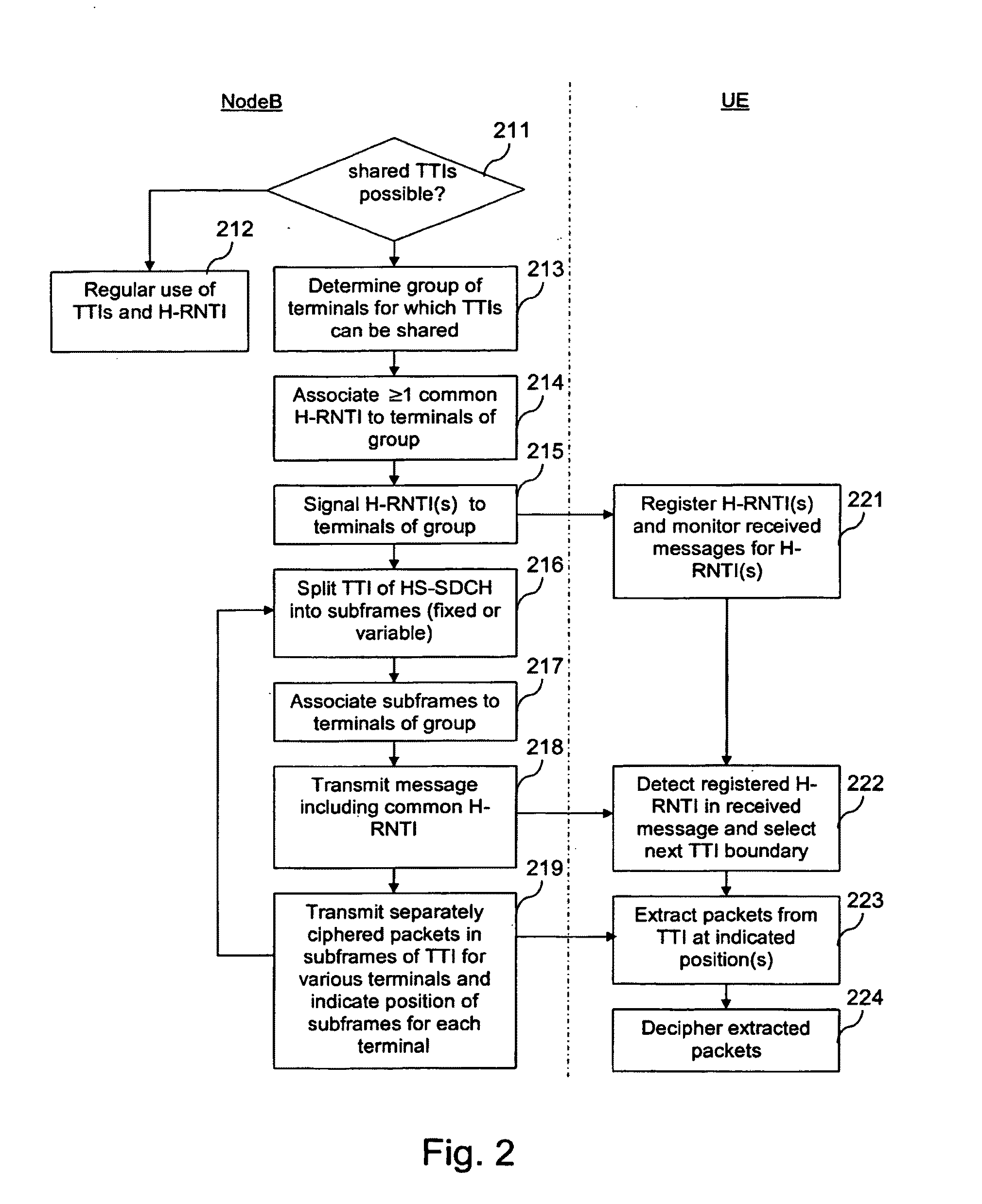Supporting a Transmission and a Reception of Data Packets
a data packet and transmission technology, applied in the field of supporting a data packet transmission, can solve the problems of unnecessarily large hs-dsch tti size of 2 ms for such small data packets, waste of bandwidth and capacity, and inability to use the available capacity in a more optimal manner, so as to achieve flexible and efficient methods, improve the effect of use and convenient implementation
- Summary
- Abstract
- Description
- Claims
- Application Information
AI Technical Summary
Benefits of technology
Problems solved by technology
Method used
Image
Examples
Embodiment Construction
[0059]FIG. 1 is a schematic block diagram of a communication system, in which a transmission time interval of a downlink transmission channel can be shared by several users in accordance with the invention.
[0060]The communication system comprises a network element 10 of a communication network and a plurality of user equipment entities UE120, UE230, UE340.
[0061]By way of example, the network element 10 is a NodeB of an UTRAN (UMTS terrestrial radio access network) supporting HSDPA.
[0062]The NodeB 10 comprises a processing unit 11 which is able to run various software components. The implemented software components comprise a UE grouping component 12, an H-RNTI assignment component 13 and a packet scheduling component 14. These components 12, 13, 14 form an HSDPA packet scheduler 15. The NodeB 10 further comprises a transmitter TX 16 for transmitting data via the radio interface, and other conventional components of a NodeB. It is to be understood that the functions of components 12,...
PUM
 Login to View More
Login to View More Abstract
Description
Claims
Application Information
 Login to View More
Login to View More - R&D
- Intellectual Property
- Life Sciences
- Materials
- Tech Scout
- Unparalleled Data Quality
- Higher Quality Content
- 60% Fewer Hallucinations
Browse by: Latest US Patents, China's latest patents, Technical Efficacy Thesaurus, Application Domain, Technology Topic, Popular Technical Reports.
© 2025 PatSnap. All rights reserved.Legal|Privacy policy|Modern Slavery Act Transparency Statement|Sitemap|About US| Contact US: help@patsnap.com



